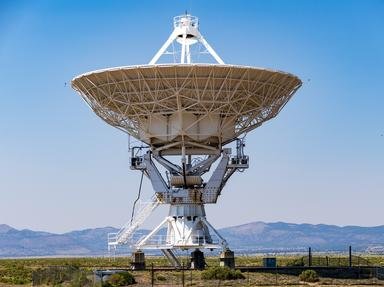Quiz Answer Key and Fun Facts
1. We'll start with an easy question. The first telescope to be used for astronomy purposes by Galileo Galilei was which kind of telescope?
2. To astronomers anything that interferes with observing, such as smog, fog, and dust, is called what?
3. The word gibbous(used to describe the moon during the waxing and waning phases when more than half of the moon can be seen) is a Middle English word meaning what?
4. The reflecting telescope was first built by what Scotsman?
5. What is the angular size of the moon?
6. One parsec is equal to what?
7. A star of spectral class B has a surface temperature of what?
8. Who is considered to be the father of radio astronomy?
9. The famous Perseid meteor shower is well known. A lesser known fact is the comet it orginates from. What is the parent comet of the Perseids?
10. One last meteor shower question. One particular meteor shower isn't usually very big. It usually produces about 10 meteors per hour. However, once every 33 years the earth intersects the densest part of the debris path producing about 1,000 meteors a minute! What is the name of this extraordinary meteor shower?
Source: Author
GeniusBoy
This quiz was reviewed by FunTrivia editor
crisw before going online.
Any errors found in FunTrivia content are routinely corrected through our feedback system.

